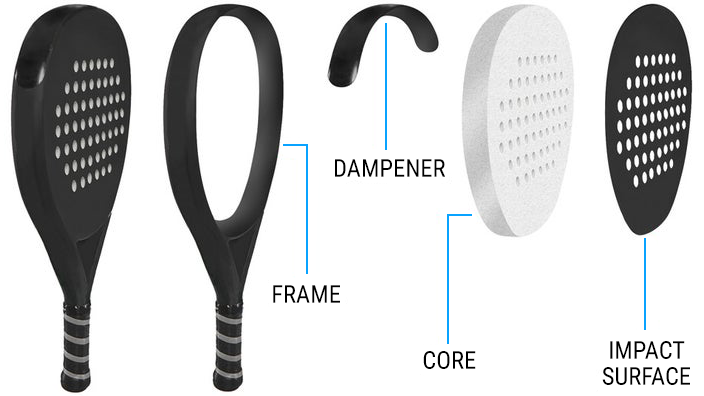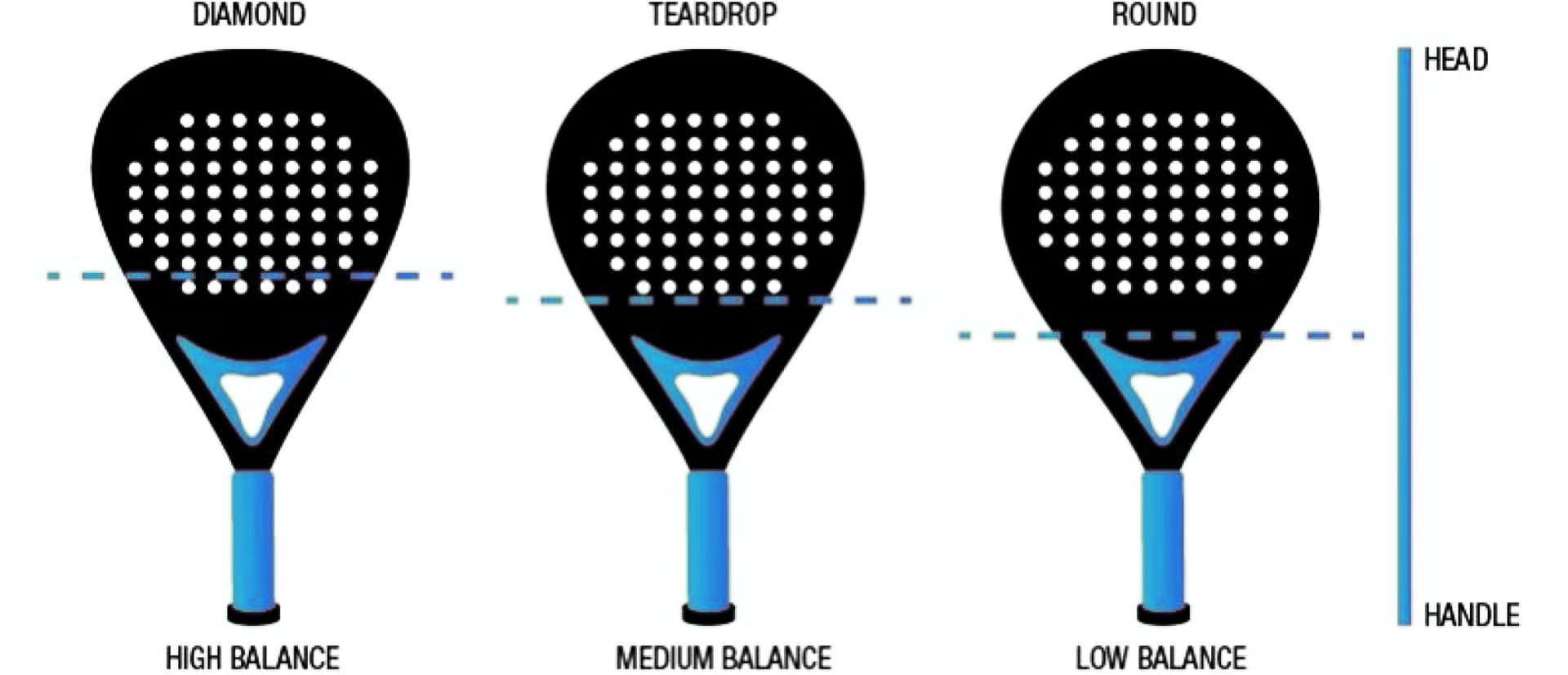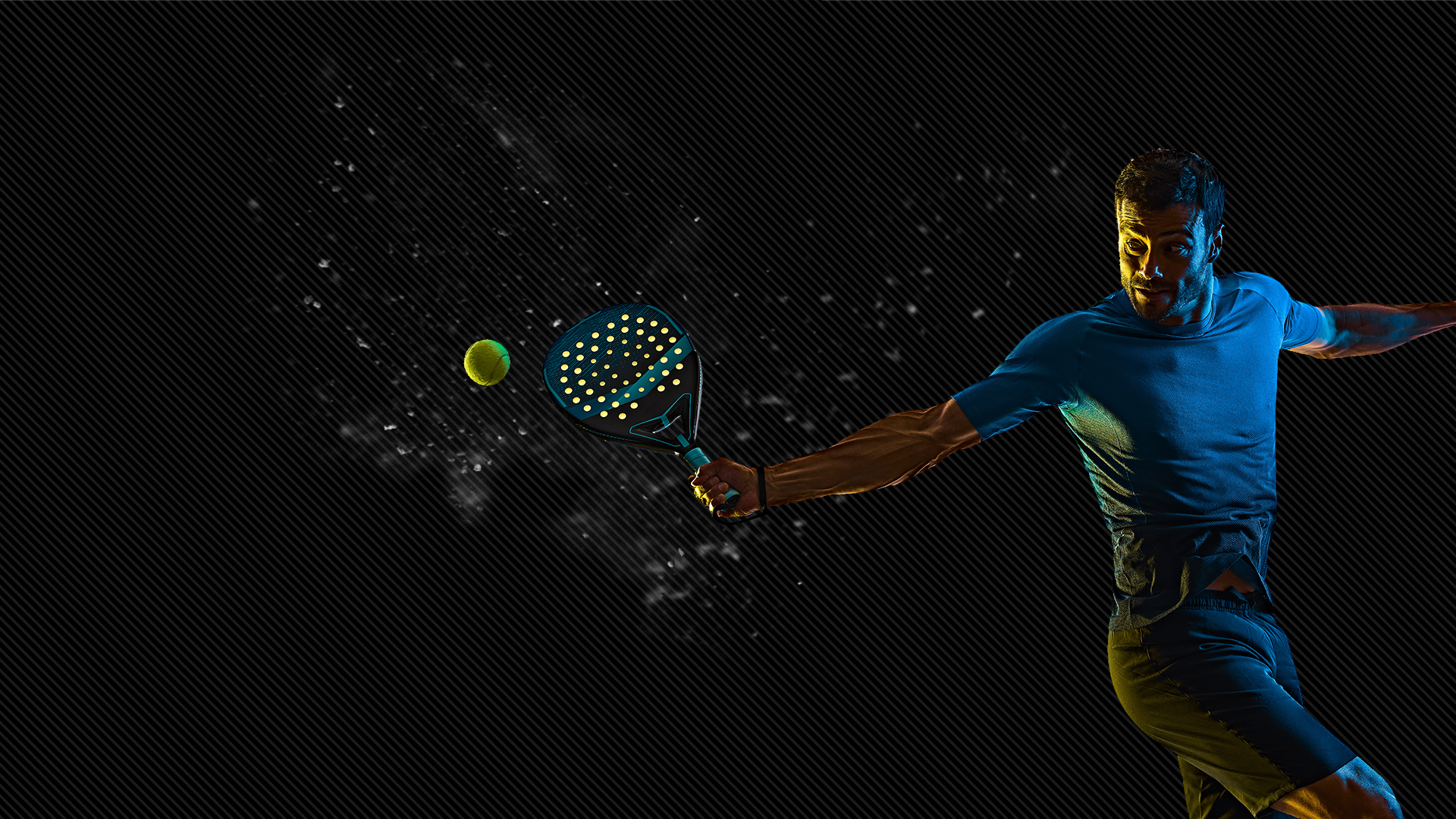What type of player are you
Attacker You spend most of the time in the net, you have an aggressive game and can sacrifice control in defense over power in volley and smashes. Go for harder materials, Diamond or Teardrop shape, balance high, weight less relevant unless you are injured or a beginner.
Defensive You feel very comfortable defending in the back of the court and prefer to have control and maneuverability both in attack and defense over power in volleys and smashes. Go for medium or soft materials depending on your level, Round or teardrop shape depending on the level.
What is your Padel level
Beginner Focus on round shape, with a bigger and more centered sweet spot and a medium balance. Tear drop are also suitable for beginners that want to attack but it will be a bigger challenge to get used to it. Ideally look for soft and medium hardness materials.
Intermediate Choose your padel shape depending on your attacking/defending skill. Attack players will prefer teardrop shapes, while defensive players will choose for round. Choose a balance medium for defensive game and high for attacking profiles. The material hardness will depend on your skill and attack/defense disposition. Softer materials for defending and less experienced players and medium hard materials for more attacking and advanced players
Advanced/Pro Diamond shape will be especially beneficial for very offensive players, and teardrop for more defensive players. Hard materials will deliver best performance for attacking players and medium hard materials for more defensive game. Balance normally will be high, although some defensive players might want to have it medium.
Components of a Padel racket

Main Features
Shape

Round Ideal for defense, beginners and intermediate players. Bigger sweet spot and more centered. Since the balance is medium or low, these rackets feel also lighter and therefore are easier to maneuver for injured players or players with less physical condition/strength. This racket prioritizes control over power.
Teardrop Good option for all types and levels of players. Sweet spot remains quite big but balance moves slightly to the top of the racket. This racket will feel less light and maneuverable in defense. The power/control split in these rackets is pretty similar in order to have the best of both worlds.
Diamond Option for very offensive and advanced to pro players. Balance is high and the sweet spot moves to the top of the rackets and it is significantly reduced. It requires more precision and strength in defensive shots but it gives extra power when you accelerate in attack. These rackets prioritize.
Balance
Normally a direct consequence of the racket shape.
Low it is not very common to find very low balance rackets. Only rackets with specific characteristics, adapted for some special needs have low balance close to the handle.
Medium Associated with round and some teardrop shapes. Very playable rackets, ranging from defense to moderate attack profiles. Bigger sweet spot and more control.
High Present in teardrop and diamond shapes. More powerful rackets but also more challenging to manage in every game situation.
Material
Fiberglass faces are more elastic and softer, and therefore they feel a bit more comfortable. Downside is the fiberglass degrades quicker and the racket can become softer over time.
Carbon rackets are usually harder, and the higher the K of fibers, the harder they are. It feels harder on slow shots, but will give you a power boost in your smash and viboras.
Hardness
Soft Soft rackets have a higher ball output at slow shots, therefore these rackets will help you in defense, low balls off the wall, and tricky situations. Beginners and intermediate players use softer material to increase their game control. Defensive players can also opt for these rackets.
Medium Medium rackets can be ideal for all level and type of players. They are comfortable to defend, but also give you a bit of extra power in attack shots.
Hard These rackets are hard to maneuver in defense as you need to be precise in the shots. When playing slow balls the ball output is low, but in exchange, when you hit power shots (viboras, fast volleys or smashes), they give a significant increase in the power output so you can put the ball out of the court! Recommended for advanced and pro players.
Note that weather conditions may vary the output of the different racket materials, very cold or warm temperatures will affect the racket ball output. With very low temperatures soft rackets can break and hard rackets will become even harder, demanding more precision form the player. Very High temperatures will make the materials softer in general.
Weight
The higher the weight, the more the power in the shots as a tradeoff for maneuverability. The higher the balance of the racket will also make it feel heavier. Player with less physical capacity or with injuries should opt for a lower weight racket and more medium balance choices.
General guidelines:
Female – between 340 gr and 370 gr.
Male – between 360 gr and 390 gr.
Junior – between 240 gr and 280 gr.
Power/control
Chose a power racket for attacking and advanced players, and a control one for less experienced and defensive players.


